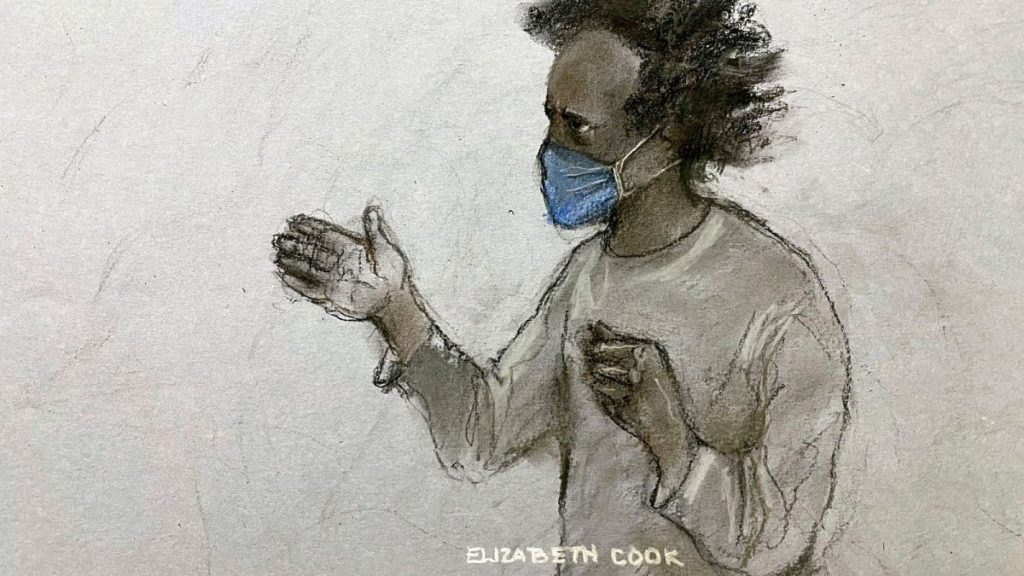The Southport Dance Studio Massacre: A Tragedy of Untold Proportions
The tranquil seaside town of Southport, England, was forever scarred on a summer afternoon in July when a horrific act of violence shattered the innocence of a Taylor Swift-themed dance class. Axel Rudakubana, an 18-year-old, unleashed a frenzied knife attack upon a group of young girls, leaving a trail of devastation in his wake. Three innocent lives were extinguished – nine-year-old Alice Dasilva Aguiar, seven-year-old Elsie Dot Stancombe, and six-year-old Bebe King. Eight other children and two adults suffered injuries, some severe, in the 15-minute rampage. The sheer brutality of the attack was evident in the number of wounds inflicted upon the young victims, with one girl suffering 122 injuries and another enduring 85.
Rudakubana’s trial at Liverpool Crown Court revealed the chilling details of his premeditated plan. The court was shown video footage of the attacker arriving at the Hart Space venue in a taxi, calmly entering the building, and then unleashing his fury upon the unsuspecting children. Screams pierced the air as the terrified youngsters attempted to flee, some already wounded. One girl, tragically, was pulled back into the building by Rudakubana after almost reaching the exit, and was subsequently stabbed 32 times but miraculously survived. The chilling footage underscored the calculated nature of the attack and the vulnerability of the victims.
The sentencing hearing provided a platform for the survivors and bereaved families to express their profound grief and anguish. A 14-year-old survivor, whose identity remains protected, bravely recounted her ordeal and the ongoing physical and emotional trauma she endured. Her words, "We will all have to live with the mental pain from that day forever," captured the enduring impact of the tragedy on the survivors. The parents of Alice Da Silva Aguiar poignantly expressed their overwhelming loss, their words "Alice was our purpose for living, so what do we do now?" resonating with the profound emptiness left by the absence of their beloved daughter. The courtroom echoed with the raw emotions of those whose lives were forever altered by Rudakubana’s heinous act.
Rudakubana’s disruptive behavior during the hearing further compounded the pain and anger of those present. His outburst, claiming illness and demanding medical attention as the prosecution outlined the horrific evidence, was met with cries of "Coward!" from the courtroom. This theatrics, interpreted as a desperate attempt to evade the weight of his crimes, only served to intensify the sense of outrage and disgust towards him. Judge Julian Goose, determined to proceed with justice, ordered Rudakubana’s removal from the courtroom, allowing the hearing to continue without his disruptive presence.
The judge, in his sentencing remarks, highlighted the gravity of Rudakubana’s crime, describing his intent as a "mass murder of innocent, happy young girls." The 52-year minimum sentence, though not a whole-life term due to Rudakubana’s age at the time of the offense and his guilty plea, effectively ensures that he will spend the majority, if not all, of his life behind bars. The judge acknowledged the unlikelihood of his ever being released, underscoring the profound and lasting danger he posed to society. The sentencing, while offering some measure of closure, could not fully mend the shattered lives of the families and survivors.
The tragedy exposed glaring failures in the system designed to identify and intervene with individuals exhibiting signs of violent extremism. Rudakubana had been referred three times to the government’s Prevent program, a counter-terrorism strategy aimed at identifying and supporting individuals at risk of radicalization. His prior research into school shootings, his online posting of images of Libyan dictator Muammar Gaddafi, and his research into a London terror attack had raised red flags, but these warnings seemed to have gone unheeded. The government, in response to the public outcry, announced a public inquiry to investigate the systemic failures that allowed Rudakubana to slip through the cracks and perpetrate this horrific act. The inquiry’s findings are expected to inform future strategies for preventing similar tragedies and strengthening the nation’s counter-terrorism efforts.
The Southport dance studio massacre stands as a chilling reminder of the devastating consequences of unchecked violent tendencies and the urgent need for robust preventative measures. It underscores the importance of effective communication and coordination between various agencies responsible for safeguarding vulnerable individuals. The tragedy also highlights the evolving nature of the threat posed by lone actors, often driven by a complex mix of motivations that defy easy categorization. The government’s recognition of this "new threat" signifies a crucial shift in counter-terrorism strategy, moving beyond traditional definitions of terrorism to encompass a broader spectrum of violent extremism. The legacy of this tragedy must be one of enhanced vigilance, improved intervention strategies, and a strengthened commitment to protecting innocent lives from the scourge of violence.














